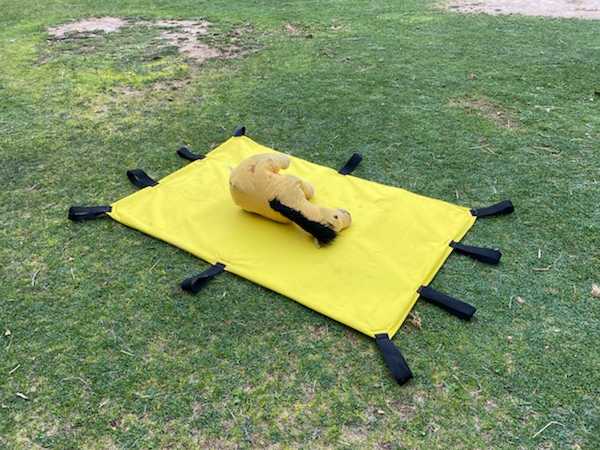
The methods in which neonatal and very young foals are handled or carried can be critical. Improper lifting and handling can result in serious internal injuries. Foals should always be lifted and transported with some sort of a device such as a foal glide or blanket.

For an unconscious, sedated or restrained foal, particularly during an extrication operation, a proper semi-rigid Foal Glide is often appropriate. However for the carrying of a downed foal, particularly one that may become active during movement, a soft carrying resource is much safer. We developed a Foal Carry-all to accomplish this task more effectively and more safely, minimizing the chances that the foal could be dropped or slip out.
Layout: 40" x 58" Foam pad covered in waterproof nylon with 10 grab straps.
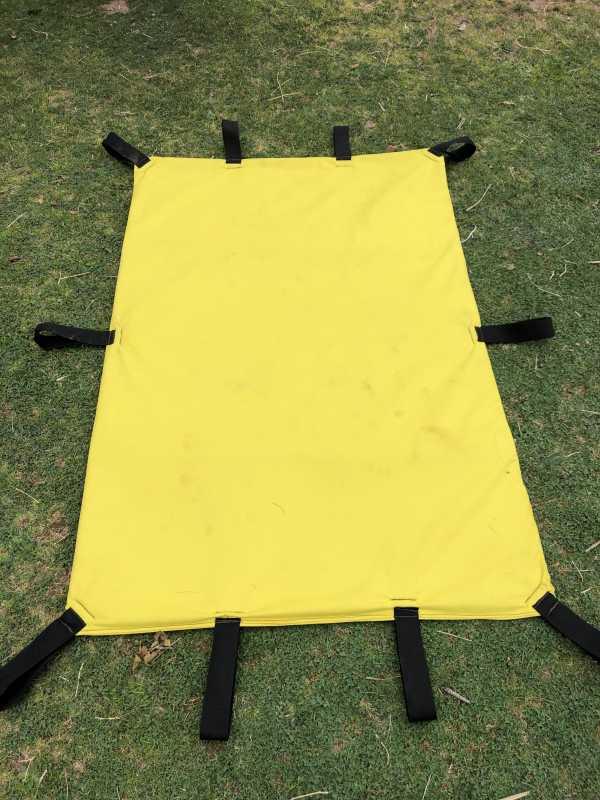
The corner straps can be pulled through the end straps to improve the "cradling" effect.
(If necessary, the side straps can be clipped together to enclose the foal.)
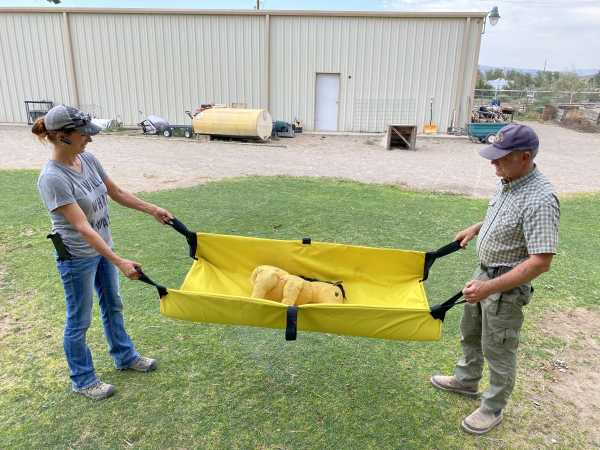
Application in real life. (It can be rolled tighter if necessary.)
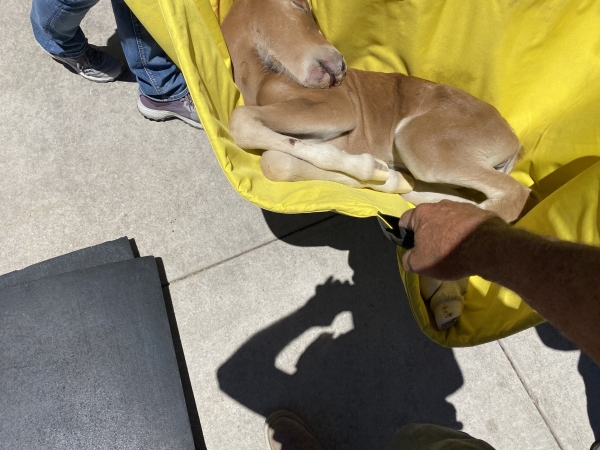
Serving as floor padding inside the ISU.
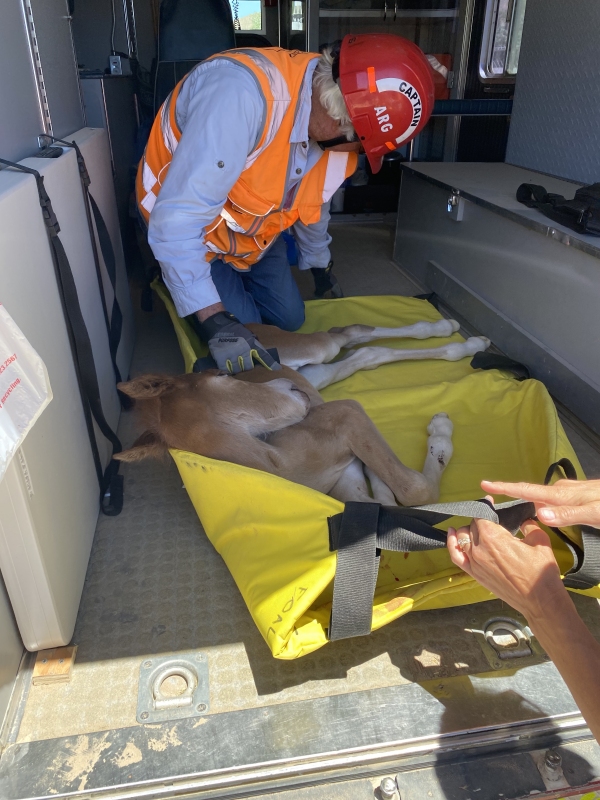
Additional floor padding during veterinary facility treatment.
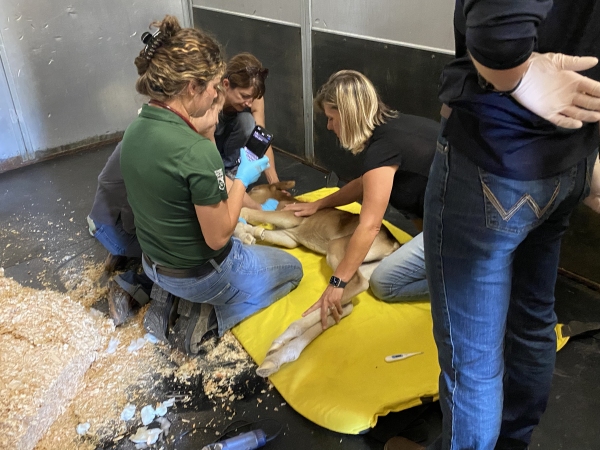
The Foal Carry-all is stored in Compartment 4 on the I.S.U.
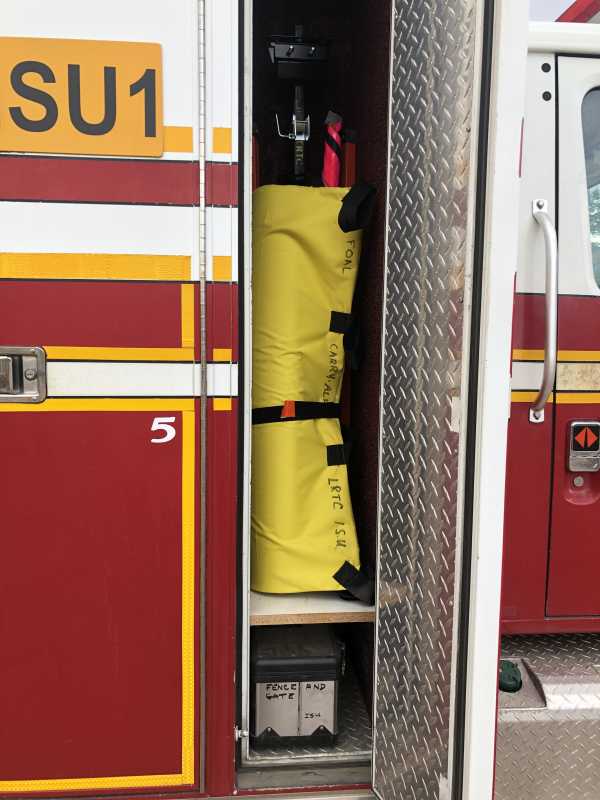
While this resource is not intended to carry people, in testing it was easy to lift a 175 Lb. person.
There may be circumstances where additional considerations for securing an older, active foal would be warranted such as blanket-wrapping the foal before carrying it.
The internal padding is intended to provide additional safety and comfort when transporting on the floor of the I.S.U. or other vehicle that does not have a padded surface.
Other relevant links:

The training information presented in these information sheets and guides is offered for illustrative and volunteer refresher purposes only. It is not a substitute for actual hands-on training.
|
Press Back to return to the page which brought you here
| 




